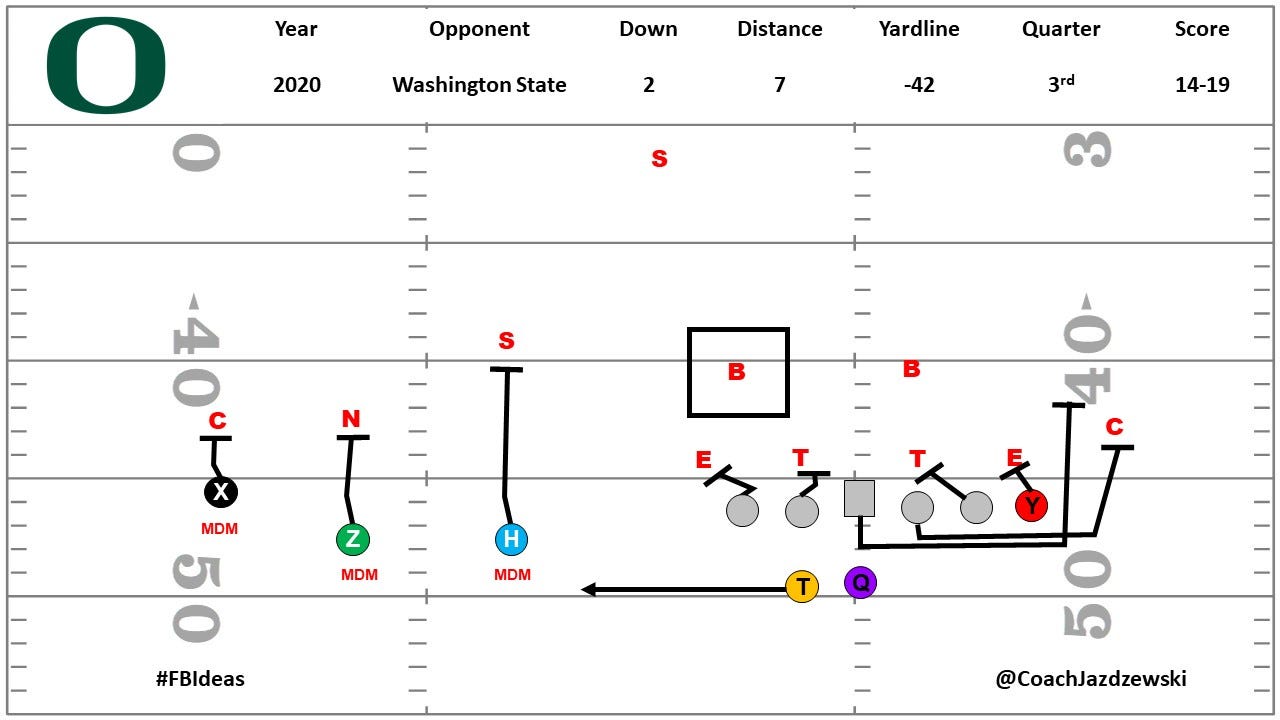The spread revolution has been going on for 20+ years now, but as offenses evolve, coaches are finding more and more creative ways to make the defense cover sideline to sideline. This Pin and Pull RPO from Joe Moorhead is an excellent example.
Oregon aligns in a nub trips formation. This alignment puts a horizontal stretch on the defense by forcing it to cover three receivers, usually to the field, along with having to run fit the extra gap to the boundary with the tight end.
The Washington State defense rolls to a MOFC closed look pre-snap. They have three over three to the field with a middle of the field safety. Two structural threats open for the Oregon offense. Which defender has #4 to the field? If it’s the Mike backer, then he cannot fit the run if the back swings to the field. On the backside the corner is the edge player. Not likely a guy who’s comfortable playing on the line of scrimmage fitting the run.
This is a very learnable read for the quarterback. For Coach Moorhead this family of plays all has the same read, the BSLB. At the snap, the offense swings the back to the field forcing the Mike to leave the box to cover him. Depending on personnel this might be something to come back to if your back is better in space than their Mike. The swing can be thrown without the read.
This leaves the offense with a six on six run scheme. At the high school level, the personnel consideration to account for is likely the tight end. If you have a tight end in your program that can effectively down block a 7-technique, you open up some real gap scheme possibilities like Pin and Pull or Down.
I’m not sure if I heard it from Dub first or somewhere else but the advantage here for the offense is the simplicity of the design and the stress and complexity for the defense. Simple for us, complex for them, “simplex”. The end result here for Oregon is a 26 yard gain.
Play Diagram:
Video Clip:







